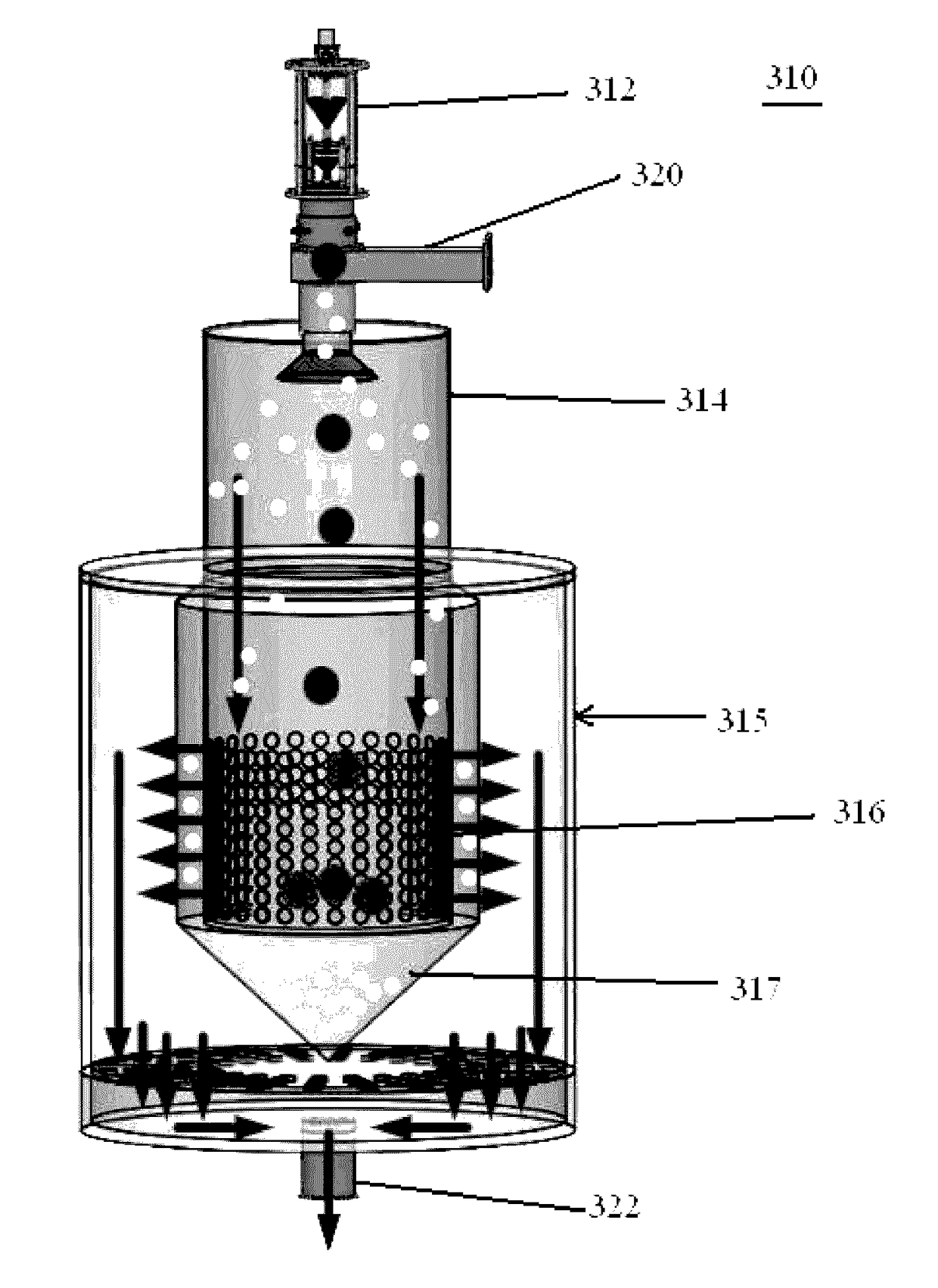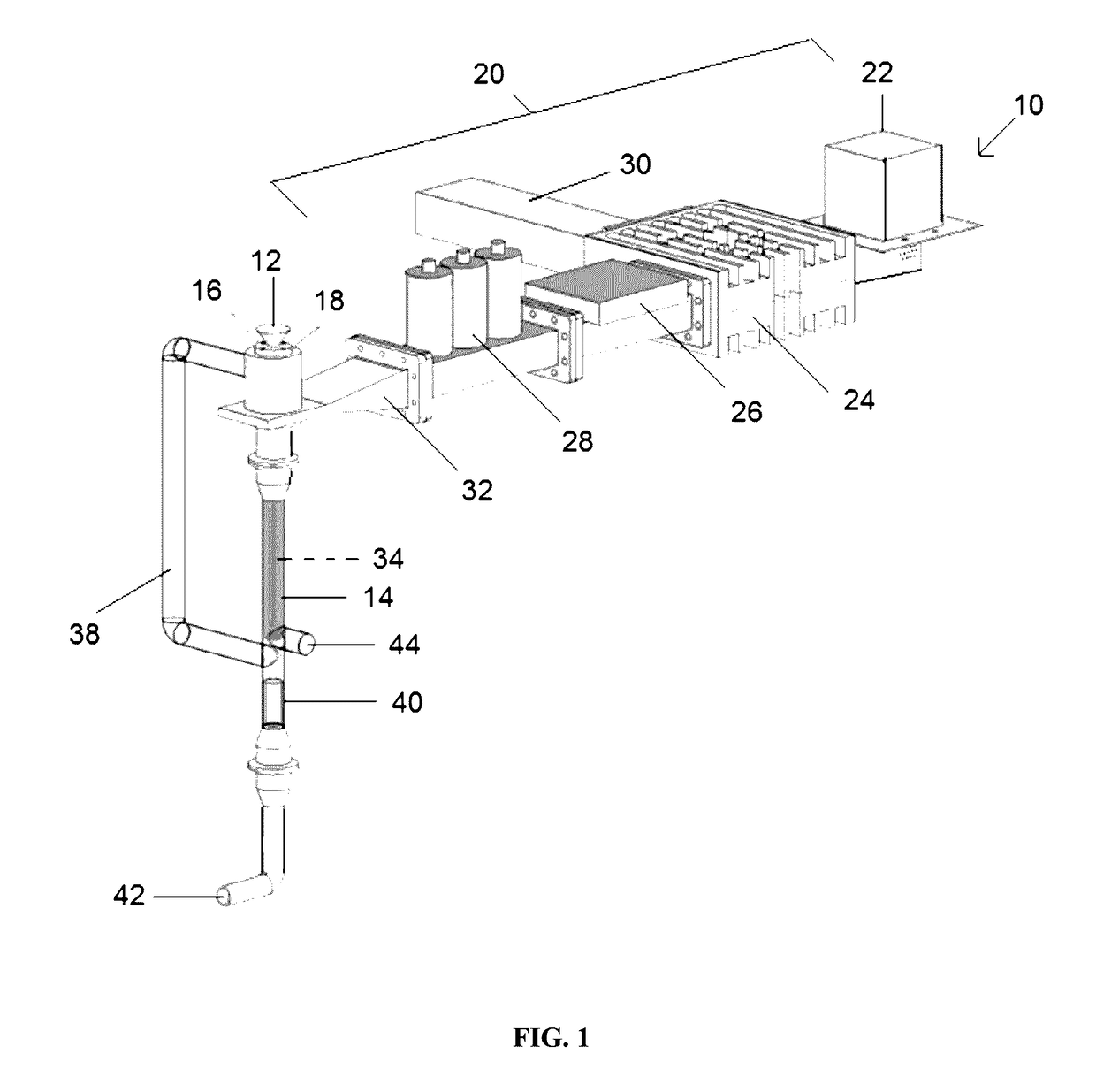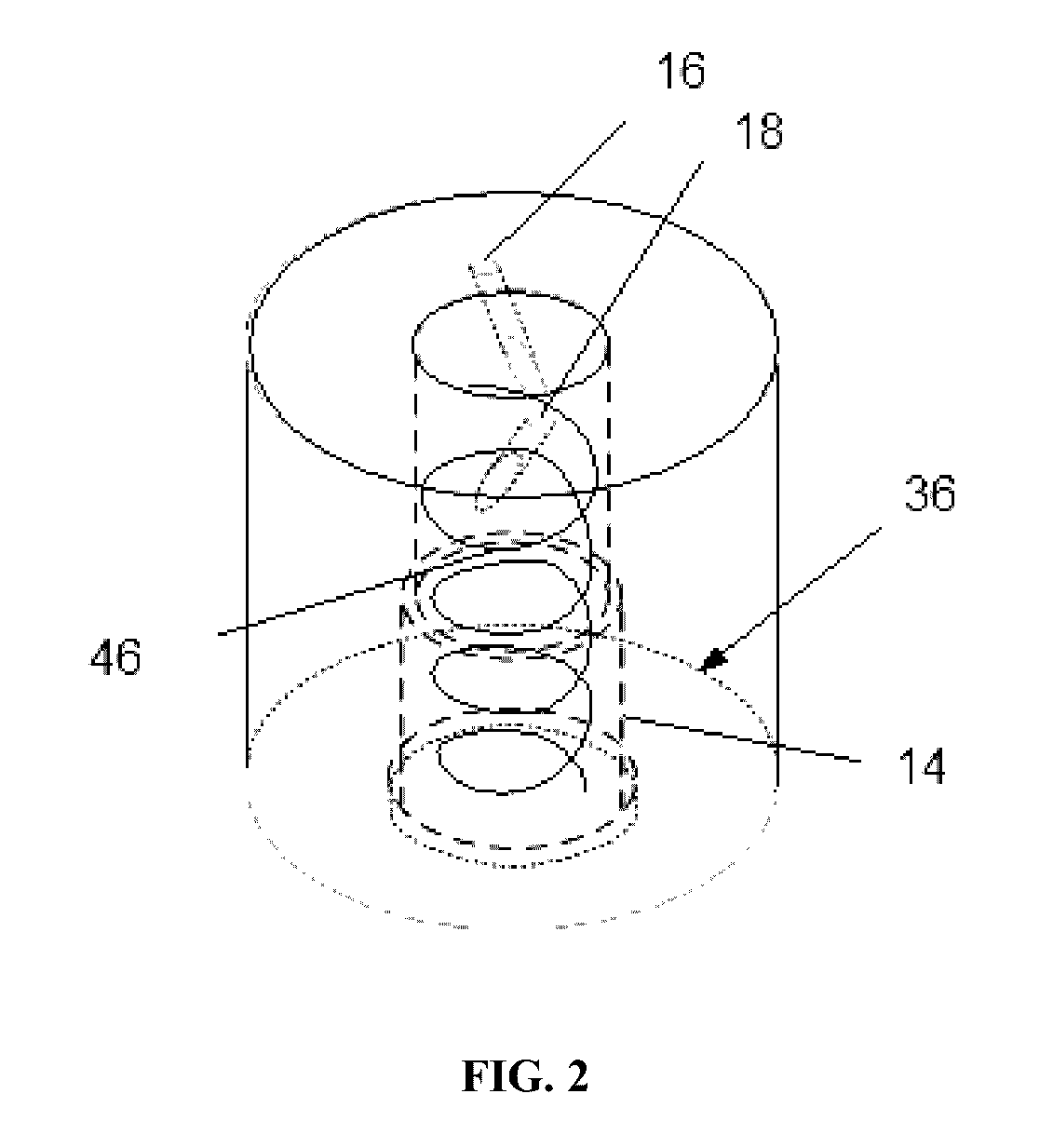Reactor and method for production of nanostructures
a nanostructure and reactor technology, applied in the field of nanotechnology, can solve the problems of high-power plasmas to produce nanostructures, inability to produce nanostructures in a consistent, efficient and cost-effective manner, and difficulty in large-scale nanostructure production using these methods, so as to achieve high-purity nanostructure products, avoid foreign material contamination of nanostructure products, and high-purity effects
- Summary
- Abstract
- Description
- Claims
- Application Information
AI Technical Summary
Benefits of technology
Problems solved by technology
Method used
Image
Examples
example 1
[0112]Tin granules (separately, less than about 10 microns (tin powder, spherical, <10 microns, 99%, Catalog No. 520373 from Sigma Aldrich) and then greater than about 100 nm (tin powder, APS approx. 0.1 micron, Catalog No. 43461 from Alfa Aesar)) were allowed to fall under gravity through the plasma jet in the quartz tube and nanowires were collected from the bottom of the tube. The obtained nanowires were tin oxide and had diameters ranging from about 50 to about 500 nanometers and lengths of about 1 to about 10 microns.
[0113]The products obtained using the two different tin metal diameter precursors (about 10 micron and about 100 nm) under the same operating conditions were imaged using SEM. The about 100 nm metal produced more uniform nanowires and about 90% conversion efficiency. The about 10 micron metal had less conversion efficiency (20-30%) and produced less uniform nanowires. Thus, smaller metal powders appeared to produce better results than larger metal powders.
[0114]FIG...
example 2
[0115]Zinc metal powder or granules (<50 nm particle size, 99+%, Catalog No. 578002 from Sigma Aldrich) (observed to be greater than 100 nm under SEM) were allowed to fall under gravity through the plasma jet in the quartz tube and nanowires were collected from the bottom of the tube. The obtained nanowires were zinc oxide and had diameters ranging from about 100 to about 500 nm and lengths of about 1 to about 10 microns.
[0116]FIGS. 12A to 12F are photomicrographs of the zinc oxide nanowires produced from the zinc metal powder or granules. FIGS. 12B and 12C show flowery-shaped zinc oxide nanowires with a high density of nanowires with uniform diameters. FIG. 12D shows a tripod structure, while FIG. 12E shows a nanobrush, and FIG. 12F shows a nanocomb (also shown in FIG. 12C) of ZnO nanowires.
example 3
[0117]Titanium metal powder or granules (greater than about 10 microns) (titanium powder, spherical, 150 mesh, 99.9%, Catalog No. 41545 from Alfa Aesar) were allowed to fall under gravity through the plasma jet in the quartz tube and nanowires were collected from the bottom of the tube. The obtained nanowires were made of titania and had diameters from about 100 to about 500 nm and lengths of about 1 to about 10 microns. The microwave power for form titania nanowires was at less than about 1000 W, and more specifically, about 700 W.
[0118]FIGS. 13A to 13B are photomicrographs of the titanium dioxide nanowires produced from the titanium metal powder or granules.
PUM
 Login to View More
Login to View More Abstract
Description
Claims
Application Information
 Login to View More
Login to View More - R&D
- Intellectual Property
- Life Sciences
- Materials
- Tech Scout
- Unparalleled Data Quality
- Higher Quality Content
- 60% Fewer Hallucinations
Browse by: Latest US Patents, China's latest patents, Technical Efficacy Thesaurus, Application Domain, Technology Topic, Popular Technical Reports.
© 2025 PatSnap. All rights reserved.Legal|Privacy policy|Modern Slavery Act Transparency Statement|Sitemap|About US| Contact US: help@patsnap.com



